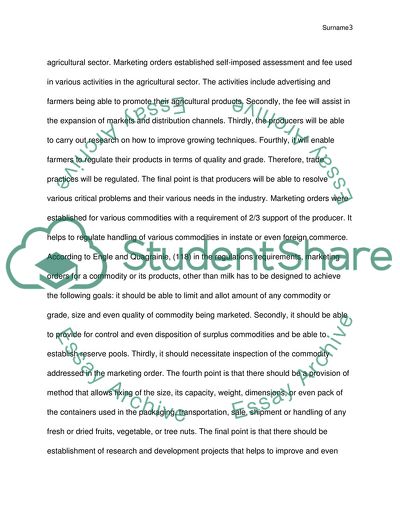Cite this document
(Agricultural Marketing Orders Essay Example | Topics and Well Written Essays - 1500 words, n.d.)
Agricultural Marketing Orders Essay Example | Topics and Well Written Essays - 1500 words. https://studentshare.org/marketing/1737217-agricultural-marketing-orders
Agricultural Marketing Orders Essay Example | Topics and Well Written Essays - 1500 words. https://studentshare.org/marketing/1737217-agricultural-marketing-orders
(Agricultural Marketing Orders Essay Example | Topics and Well Written Essays - 1500 Words)
Agricultural Marketing Orders Essay Example | Topics and Well Written Essays - 1500 Words. https://studentshare.org/marketing/1737217-agricultural-marketing-orders.
Agricultural Marketing Orders Essay Example | Topics and Well Written Essays - 1500 Words. https://studentshare.org/marketing/1737217-agricultural-marketing-orders.
“Agricultural Marketing Orders Essay Example | Topics and Well Written Essays - 1500 Words”. https://studentshare.org/marketing/1737217-agricultural-marketing-orders.


